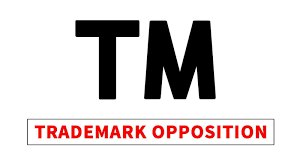The Trademarks Act, 1999, provides for the registration of a trademark in India. The owner of the trademark has to apply to the Registrar of Trademarks (‘Registrar’) for obtaining the trademark registration. Upon receiving the application for registration, the Registrar will advertise the trademark in the trademark journal.
Any person can file an opposition for registration of the trademark published in the Trademark Journal. The opposition is to be filed to the Registry of Trademarks, where the trademark registration application is filed. When the trademark registry receives any kind of opposition to the trademark, it will conduct a hearing to decide the matter.
The Trademark Act, 1999 and the Trade Marks Rules, 2017 provides the process of trademark opposition.

What is a Trademark Opposition?
Trademark Opposition in India comes at a stage after the registrar has approved the trademark application on the distinctiveness factor and publishes the trademark in the journal for the third-party opposition. Anyone can oppose the published trademark within a period of 3 months which can be extended for a month more (3+1); beginning from the day it was first published. If the mark is opposed, an opposition proceeding is initiated. After which, both the parties involved need to come to a conclusion and the decision is taken. The decision whether the mark can be registered or abandoned would be made. There is no restriction on filing an opposition. Anyone who believes that the published mark might create confusion among the public can file for the opposition while the onus of defending the trademark lies in the hands of trademark registrant.
Grounds for Trademark Opposition
- The trademark is identical or similar to an already existing registered trademark.
- The trademark is descriptive in nature.
- The trademark is devoid of distinctive character.
- The trademark is customary in the present language or the established practices of business.
- The application for trademark registration is made with bad faith.
- The mark is prevented by law or contrary to the law.
- The trademark is likely to cause confusion or deceive the public.
- The trademark contains matters likely to hurt the religious feelings of any section or class of people.
- The trademark is prohibited as per the Emblem and Names Act, 1950.
Initiation of Trademark Opposition -Eligibility
- According to Section 21 of the Trademark Act, ‘any person’ can oppose a trademark, irrespective of their commercial or personal interest.
- A trademark can be countered by filed by a customer, member of the public or competitor, or any other person. Also, the person filing the trademark opposition needs to be a prior registered trademark owner.
- After a opposition of trademark is filed, both parties need to conclude whether the trademark should be abandoned or registered.
- Anyone who believes that the published mark might create confusion among the public can file for the Opposition while defending the trademark lies in the trademark registrant’s hands.
Documents required to file a Trademark Opposition
Details of applicant- Name, Address, Nationality, etc of the applicant.Body corporates/other categories need to provide with registration certificate
Power of Attorney- It allows the attorney to file the trademark opposition on your behalf
Affidavit- Affidavit with the basic information about the trademark and its user date and proof of use
Details about the opposed mark- Detailed information about the mark against which the opposition is to be filed, i.e. name and basic grounds for filing the opposition
Trademark Opposition Procedure
Initiating a Trademark Opposition
Suppose an individual wishes for an opposition of trademark. In that case, they can submit their concerns to the Registrar within four months from the date the registration application was advertised in the trademark journal. This is done using Form TM-O, accompanied by the necessary fee.
This opposition notice should detail the trademark registration application, information about the opposing party, and the reasons for Opposition. Within three months of receiving this, the Registrar will forward the applicant a copy of the opposition notice.
Stage One: Responding with a Counter statement
Upon receiving the opposition notice, the applicant has a two-month window to submit a counterstatement using Form TM-O. This statement should clarify their stance. The Registrar will provide the opposing party with the applicant’s counter statement within two months.
If the applicant doesn’t respond within the specified two months, their trademark registration application is deemed abandoned, halting the registration process.
Stage two: Presenting Evidence in the Opposition Process
The party opposing the trademark must present Evidence backing their Opposition to the Registrar within two months of receiving the applicant’s counterstatement. This Evidence should also be shared with the applicant.
Subsequently, the applicant has two months to submit Evidence supporting their application after receiving the opposition evidence. This Evidence must be shared with both the Registrar and the opposing party.
Optional Stage Three: If needed, the opposing party has another month to submit further Evidence after receiving the applicant’s Evidence. This, too, must be shared with the applicant and the Registrar.
Trademark Opposition Hearing & Determining the Outcome of the Opposition
The Registrar schedules a trademark opposition hearing after the evidence exchange, notifying both parties. Should the opposing party be absent, their Opposition is dismissed, leading to the trademark’s registration. Conversely, if the applicant is absent, their application is considered abandoned and is dismissed. All written arguments provided by both sides will be taken into account.
Post deliberation, the Registrar determines whether to register the trademark or dismiss the application. This decision is then communicated in writing to both parties at their specified addresses. This is the specific process involved in the trademark opposition hearing.
Conclusion & Final Steps in the Trademark Opposition Procedure
If the Registrar rules in favor of the applicant, the trademark gets registered, and a certificate is issued. However, the trademark registration application is denied if the decision is in the opposing party’s favor.
FAQs
What is trademark opposition?
Trademark opposition is a legal process where a third party can challenge the registration of a trademark after it has been published in the trademark journal but before it is officially registered. It allows someone to object to the trademark if they believe it infringes on their rights or violates trademark laws.
Who can file a trademark opposition?
Any person or entity who believes that a trademark’s registration would harm their rights can file an opposition. This includes trademark owners, businesses, or anyone with an interest in the matter. The opponent does not need to be a trademark owner themselves.
